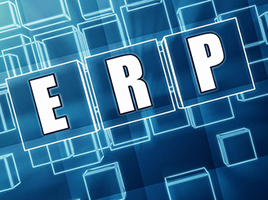SAP Fiori is a UI technology designed to enhance the end-user experience for all the related tools and apps that come with an SAP ERP solution. This is important because over 70% of large businesses use an SAP ERP system. All data transmitted to or visualized by SAP Fiori is transacted in real-time and touches nearly every part of a business, such as asset management, human resources, finance, R&D, sales, supply chains, and more. But just like all major technologies, SAP Fiori is also prone to security breaches. In the remainder of this article, we address specific threats and how to mitigate them.

The Risks & How To Mitigate Them
- Network Security:
One of the primary ways that a cyberattacker can break through is via the network line of communications, from the device to the application layer of SAP Fiori and vice versa. Therefore, the SSL network protocol is one tool that ensures a safe way of accessing the platform. The SSL protocol can be used in conjunction with the regular web protocol, which is HTTP. Once these two are put together, it forms the HTTPS protocol, which ensures—to some degree—that data transmitted back and forth is scrambled. The site’s security can be confirmed by checking for the padlock in the “locked” position on the left-hand side of the URL bar. Also, be aware of when the SSL certificate expires so you can renew it beforehand.
- User Authentication:
Passwords have always been used as the primary means for granting access to portals, intranets, and shared resources stored on servers. However, passwords are also one of the weakest links in the security chain. When protecting information visualized by SAP Fiori, IT personnel need to buttress passwords that are the only means of authentication, with additional security. They must adopt more robust mechanisms, such as an RSA Token or a Biometric Modality like fingerprint recognition. However, the choice of what to use depends upon the configuration of the SAP Fiori client and the attempted connection, such as the SAP Mobile Platform Server or SAP Cloud Platform mobile service. In addition, Multi-Factor Authentication (MFA) is a must when dealing with administrative-level accounts. Following these procedures, IT administrators use at least three authentication mechanisms to confirm an individual’s identity.
- Secure Data:
Ransomware is today’s most prevalent cyber threat vector–nothing is immune, not even SAP Fiori. In a ransomware attack, the datasets become encrypted by the cyberattacker, and nothing can be done until a ransom is paid. A schedule of regular backups must occur as insurance from hackers separates companies from their data. In addition, large organizations need to consider using Public Key Infrastructure (PKI), which offers the highest level of encryption. Further, these organizations should implement a Mobile Device Management policy for remote workers accessing SAP Fiori.
- Native Device Access:
Many SAP ERP systems, including those using SAP Fiori, allow access to devices such as cameras and even the end user’s contact book, which can be easily heisted for launching Social Engineering Attacks – this can be a crippling cyber risk. Therefore, only authorized users should have device access if the SAP ERP system controls these items. It’s also advised to implement a Mobile Device Management Policy and monitor it in real-time for abnormal network activity. The real-time monitoring can be done with a router or a network intrusion device coupled with an SIEM.
- Data Privacy:
Data privacy is always front and center. Because of this, businesses now have to contend with legal issues from GDPR and the CCPA mandates; if not, they face exhaustive audits and financial penalties. SAP Fiori has built-in compliance functionality to help organizations abide by these mandates.
- Overcoming Clickjacking:
In simple terms, clickjacking occurs when an end-user clicks on a link with a hidden link beneath. As a result, they are taken to an erroneous website. In some ways, this is similar to a phishing attack, but in this instance, the different URLs can be seen by hovering a mouse over the original link. To counter clickjacking in SAP Fiori, SAP NetWeaver can be used to deploy sophisticated white labeling strategies.
Conclusion
While adding SAP Fiori to the ERP system has advantages, one of the other main risks is increasing the attack surface for future security breaches. Even worse, 64% of businesses experienced a cyberattack with their ERP systems. Therefore, the need to protect your SAP Fiori is paramount. Following the remediations in this article will significantly lessen the odds of being breached.





